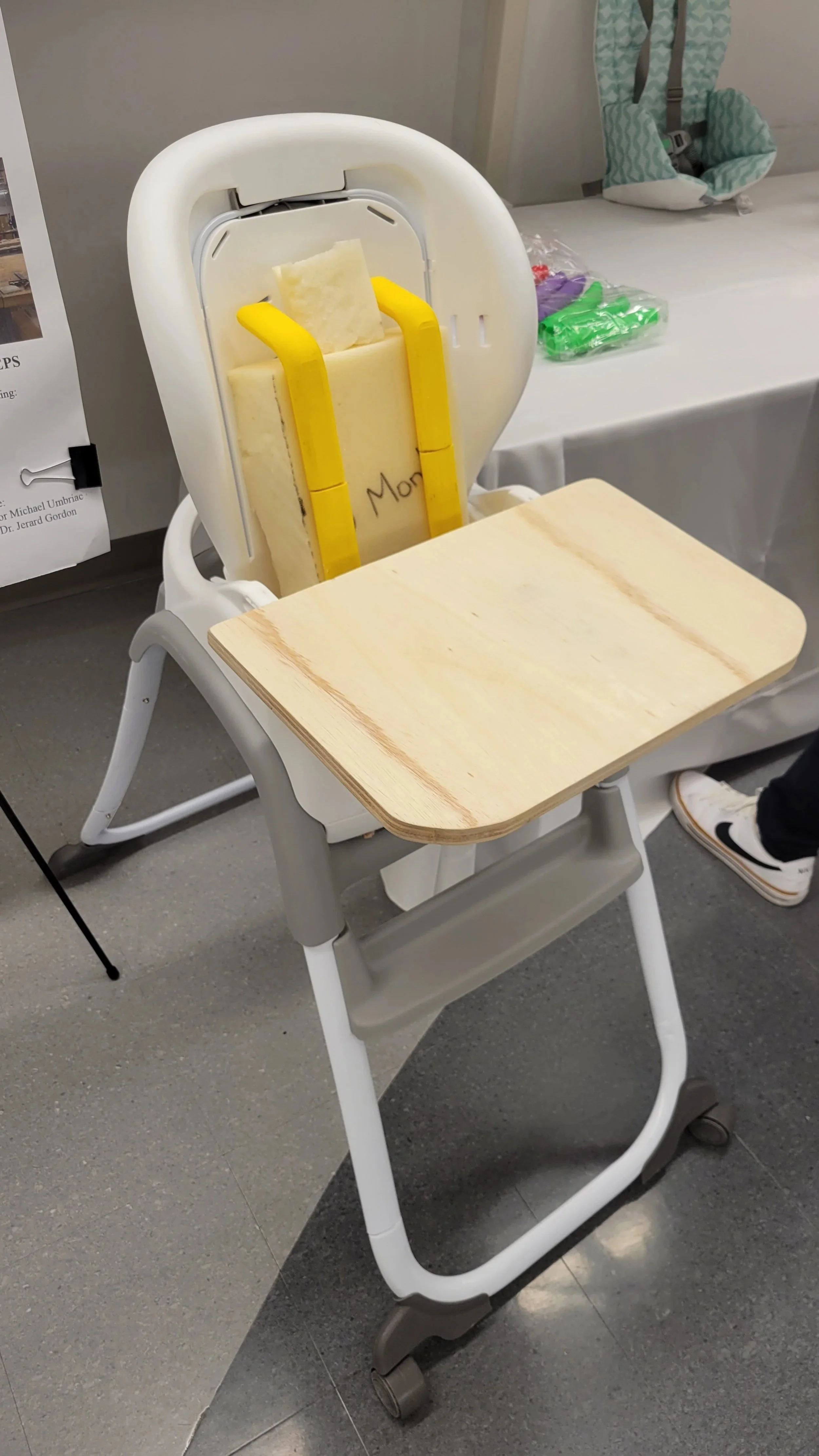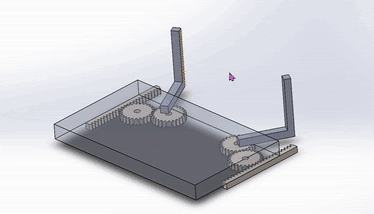A Safer High Chair
Redefining toddler safety with an improved restraint system
Senior Capstone - Winter 2023
Client / Company
Kids In Danger
Role
Lead Engineer
CAD Designer
Skills
User research
Iterative prototyping
Mechanical design
Machining
Materials
Machined Aluminum
3D printed plastic
Tools
SolidWorks
Mill
Lathe
Background
The sponsor for this project, Kids In Danger, tasked us with creating a prototype that addresses an identified safety hazard in toddler high chairs.
Toddler high chairs are the leading cause of injury by nursery products in children under 5. In 2021, about one child every hour visited the ER for high chair-related injuries.
High chair safety poses challenges beyond what we could address in a semester. For example, ASTM F404-21 standards only became mandatory in 2018, meaning older hand-me-down products may be unsafe. Even with recalls, caregivers are often unaware unless the issue receives major media attention, leaving many to unknowingly use hazardous or recalled chairs.
Research & Problem Identification
What can we do?
We decided to focus on the high chair itself. We asked, what are the current safety hazards with existing high chairs?
Chair tipping over, either from poor design or from the child leaning too far or pushing off a table.
Strangulation caused from the child slipping downwards and getting their neck caught on the feeding tray.
Lacerations from pinch points caused by poor design, moving parts, incorrect assembly, or cracks in the chair.
Unrestrained child falling out of chair.
Since the safety standards became mandatory, high chairs are generally pretty safe. However, our research identified one area of improvement: the safety restraint.
Key Finding
Some caregivers forgo using the attached safety restraints.
It’s a food magnet that’s hard to clean.
It can be cumbersome to use.
It requires two hands and a compliant child.
Not using the built in safety restraint exacerbates the existing hazards of high chairs.
How might we redesign the safety restraint so that it
Is easy to use.
Keeps the child safe.
Can’t be avoided?
Ideation
We came up with 160 unique ideas and narrowed them down to three. They all feature a rigid restraint system that is linked to the feeding tray. A rigid restraint system appealed to us because it would be easier to clean, more secure, and safer.
Rigid restraint attached to pivoting tray
Pivoting torso restraint whose motion is coupled to a pivoting tray
Static torso restraint attached to sliding tray
We purchased an affordable high chair and some flexible material to experiment with different restraint shapes.
I modeled this rigid restraint system that secures the child’s torso, waist, and crotch. It is attached to a sliding tray with a locking mechanism. The caregiver would press and hold the button to release the tray, place the child into the seat, and then secure the child by sliding the tray forward.
Alpha Design
Motion Coupling
We were concerned that our sliding tray design wouldn’t provide enough space for the caregiver to comfortably place the child into the seat. We were also worried about the potential for our shoulder restraint to strike the child’s face or body as the tray was slid inwards.
The restraint had to move out of the way as the tray slid out.
Rack and Pinion Mechanism
I decided a rack and pinion mechanism could couple the sliding motion of the tray with the pivoting motion of the shoulder restraints. This creates a wider opening for the caregiver to place the child into the chair. The restraint can then be comfortably positioned over the child as the tray slides in.
Refined Model
Mechanism components are enlarged for CAD visualization. A production-level mechanism could be made using small plastic parts that are hidden inside the tray.
Final Prototype
We fitted our restraint system to a purchased high chair instead of prototyping the chair itself. The rack and pinion were 3D printed. The two support plates were cut using a water jet, and the rest of the components were purchased and machined. The tray is made of birch plywood.
Results, Takeaways, & Next Steps
While we didn’t achieve the level of prototype fidelity we hoped for, we successfully demonstrated our idea’s functionality. Our design addresses safety hazards in high chair restraints with a rigid system that is safer, easier to clean, one-hand operable, and unlike anything currently on the market. Our sponsor was pleased with the outcome, and I gained valuable experience adapting to fabrication issues, planning ahead, and interviewing users during research and development.
Future improvements focus on adjustability and locking. High chairs must grow with the child from 6 months to 2–3 years, so features like telescoping or interchangeable parts are essential. The tray also needs a secure lock accessible only to caregivers. Once these elements are refined, the system should be scaled down and simplified for safety before moving into user testing.




















